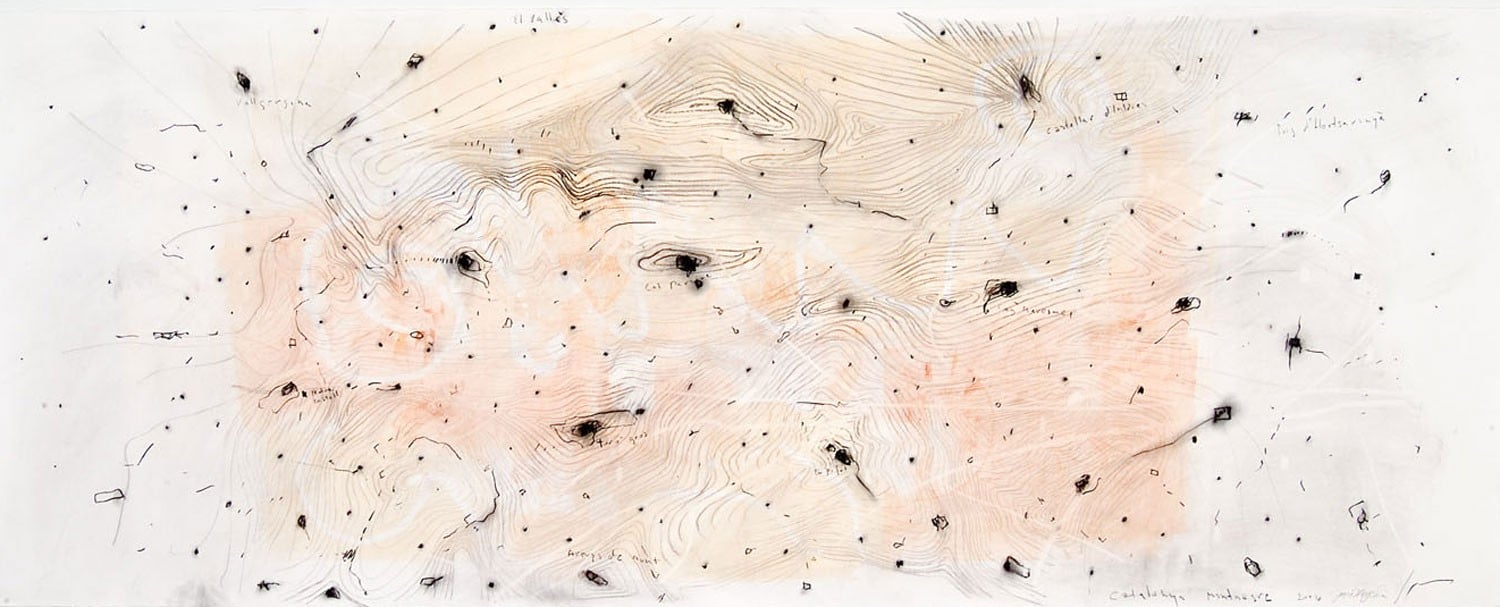
JORDIE ROSES & JOYCE MAJISKI | TRANSMIGRATIONS
September 28 – November 3, 2006
Transmigrations
Transmigrations includes work by two artists, Jordi Roses from
Catalunya, Spain and Yukoner Joyce Majiski. The project investigates
intersections between cycles in nature and the manmade world, bringing
together work by each artist as well as 2 collaborative pieces: “Bany
de Nit” and “Map of Montsey”. These collaborative works began with
several large etched copper birds, which Majiski printed in Vancouver
for the first layers of the monoprints. The prints then travelled with
her from the Yukon to Spain for the collaboration.
Ideas behind Majiski’s work
While the repetitive call of the whip-poorwill can evoke the star
studded ebony nights of my childhood and the melodioc oldsquaw takes me
home to the arctic, it is the distant hooting of the Trumpeter Swans
and Canada Geese that evokes the greatest emotional response within me.
The sight of those long V’s stretched across the sky, stirs within me
an ancient longing to move and I wonder at this compelling need that
links me to the animal world.
Countless generations of birds and animals navigated their way across
the planet, hardwired by instinct and signals unknown to us.
Biologists suspect that they use constellations and land formations to
negotiate their way but have no idea how our manipulations of the
environment affect these references. Agriculture, light pollution,
cityscapes, power lines and air traffic are but a few of the hazards we
have introduced.
How do our environmental manipulations affect their instincts? What is
instinct and what is learned behaviour?
Ideas involving sense of place, notions of home, navigation and
language, led me to question our own freedom of movement in this age of
globalization. There is a relative ease in travelling around the globe
for some, while others are hampered by socio-economic barriers and the
walls of bureacracy, denied entry and access to the good life. What
defines the good life? Our culture is defined partly by our way of
life, customs, spiritual and moral beliefs yet what part does nature,
animals and landscape play? The way we superimpose maps on a
landscape, how we navigate, how we have created a system to track time
and communicate globally, these innovations are all of interest to me.
I am drawn to the parallels regarding migrations in the natural world
and the constructed one. Environmental manipulation or increased border
security, both ultimately result in the restriction of free movement of
wildlife and humans on the land.
Jordi Roses
Jordi works as a master platemaker and printmaker for other artists in
his studio, Murtra Edicions near Barcelona, Spain. In his own art
practice, he prefers to let his work speak for itself, reflecting upon
the subtle beauty of nature and natural systems. His work reveals a
deeply felt sense of place and regard for nature.
Joyce Majiski
Joyce is a multi-media artist based in Whitehorse. Her work reflects a
strong association with nature and wild places. Her recent work
addresses both human and wildlife migrations, nature and the complex
interrelationships between systems. She raises questions about freedom
of movement in this age of globalization as well as the changes wrought
by human manipulation of the landscape.
Joyce has made etchings and monoprints since 1986, travelling
extensively to pursue her obsession with printmaking.
